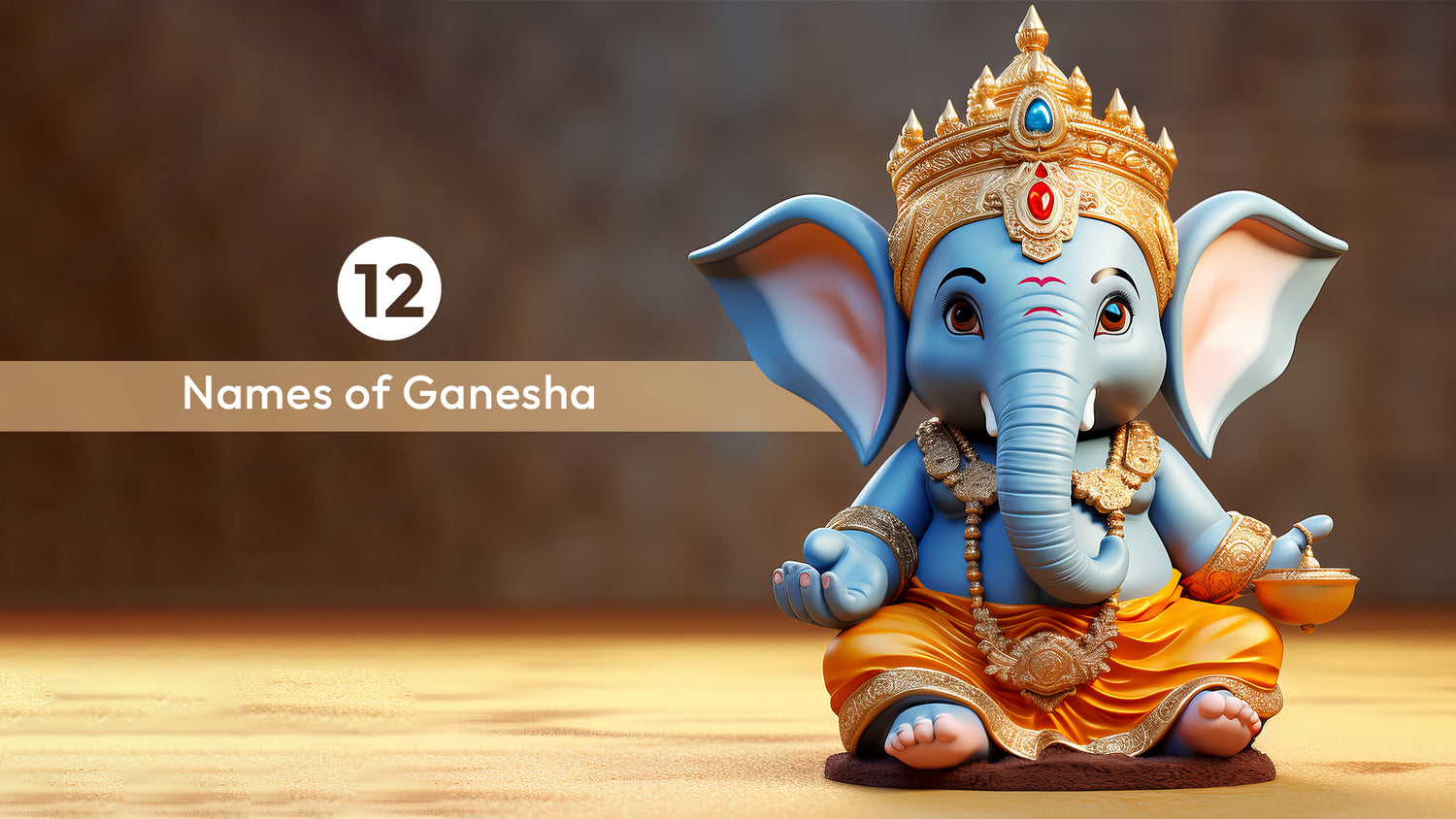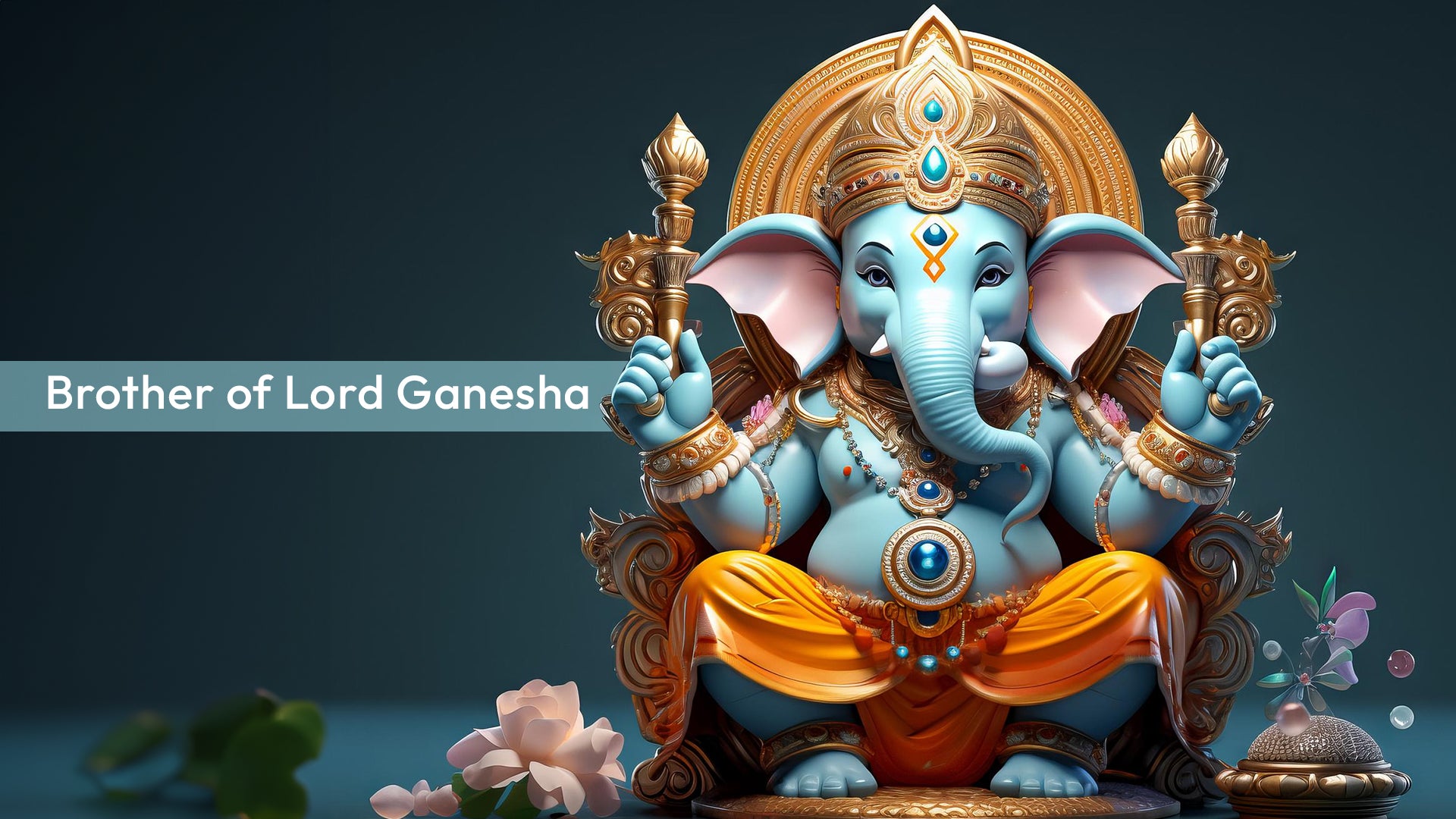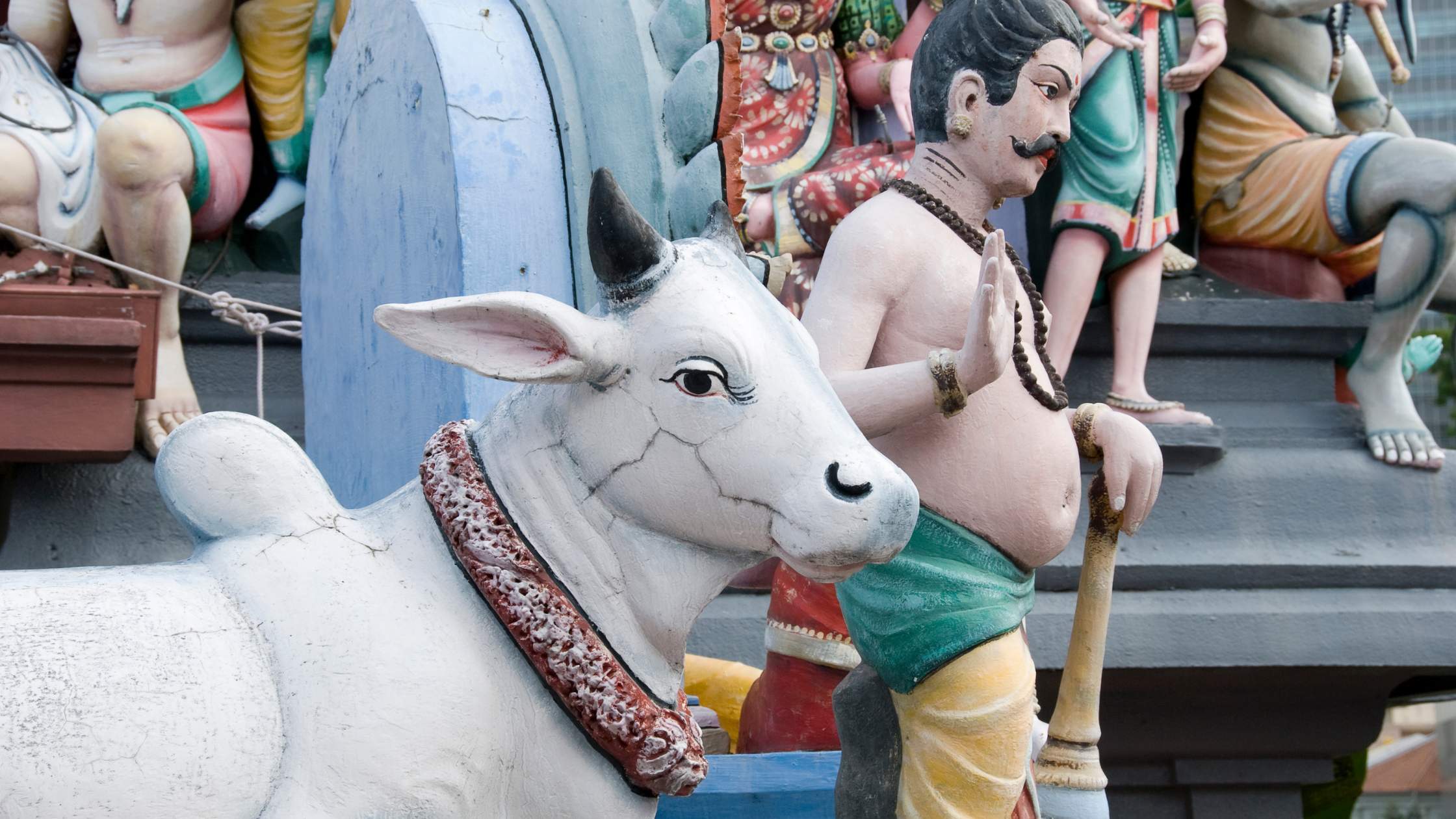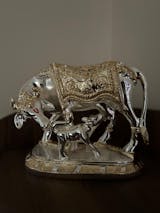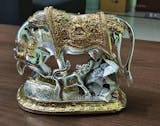Shri Ganesha has earned the divine right to be the first deity to be worshipped among the multitude of gods and goddesses that comprise the Hindu pantheon. Based on his multiple attributes, Lord Ganesha is known by 108 names in total, of which 12 are the major ones. This blog discusses the 12 principal names of Ganesha to know their significance.
What are the 12 Names of Ganesha?
-
Sumukha: Auspicious Face
Sumukha is one of the 12 important names given to Lord Ganesha and refers to someone with a beautiful face. The celestial magnificence of Lord Shiva and Goddess Parvati finds its exquisite manifestation in their son, the elephant-headed deity with a single tusk and diminutive eyes. Lord Ganesha is said to have inherited the prominent characteristics of the moon, justifying his name, Sumukha.
-
Kapila: Yellowish-Brown Coloured
Lord Ganesha is called Kapila for his reddish-brown complexion. This colour is symbolic of his grounded nature and the stability of his beliefs and actions. It is also a reminder that he is a god who is close to the people and understands their struggles.
-
Vikat: Huge and Gigantic
Lord Ganesha is referred to as “Vikat” for his massive size. Vikat can be translated to mean “big” or “great”. He has a big stomach, a large head, and multiple arms. Other popular forms of Ganesha are depicted with a variation in the number of hands, from two to sixteen.
The large size of Lord Ganesha’s body indicates his enormous power and might. The body size further seeks to send out a message that he can overcome any difficulty and safeguard his followers.
-
Lambodara: The Huge-Bellied God
Lord Ganesha is called Lambodara for his large, pot-like belly. Lambodara means the "one with a long belly." However, it also has a more profound symbolism, suggesting that Lord Ganesha contains the entire Universe within himself. From this perspective, "udara" can also signify the "Universe”.
A pot belly may be misconstrued as being linked to obesity, but Lambodara is far from that and highlights Lord Ganesha's cosmic nature. It signifies spiritual vastness rather than physical weight, emphasising the deity as the embodiment of the Universe.
-
Ekadanta: Single-Tusked Lord
Ekadanta, or “One Tusked”, is another name given to Lord Ganesha. The story goes that Lord Shiva, finding Ganesha too enchanting, granted him an elephant head and protruding belly. Ekadanta highlights his distinctive single tusk, distinguishing him from conventional elephant heads with two tusks.
-
Gajakarna: One with Ears Like an Elephant
Gajakarna means having ears like that of an elephant. Lord Shiva, in a fit of anger, severed Ganesha's head, but he quickly restored life to his son by affixing an elephant's head. Gajakarna symbolises Ganesha's wisdom, intelligence, and attentive responsiveness to devotees' prayers and needs.
-
Vighnavinashanaya: Remover of Obstacles and Impediments
Vighnavinashanaya means the “destroyer of obstacles” and Lord Ganesha is widely revered to by this name. He is also recognized as Vighneshvara, or one whos is capable of strategically placing obstacles when needed to maintain spiritual or material balance.
-
Vinayaka: Lord of All
Vinayaka, also known as Binayaka, is a common name for Ganesha found in the Purāṇas and Buddhist Tantras. This designation is reflected in the eight renowned Ganesha temples in Maharashtra, the Ashtavinayak. He is called Vinayaka because he has no master above him.
-
Dhoomravarna: Smoke-Hued Lord
Lord Ganesha is known as Dhoomravarna for his pale complexion, which resembles the lingering whitishness of smoke. The term combines "Dhoomra" (smoke) and "Varna" (colour/appearance), reflecting a tawny or smoky hue. In this incarnation, Ganesha, riding a blue horse, triumphantly defeats the demon Ahamkarasura, personifying ego and pride.
-
Ganadhakshya: Lord of all Ganas (Gods)
The name Ganadhakshya signifies two aspects of Lord Ganesha. The first means the controller of all measurable things, and the second one is the controller of all deities. As the leader of all the Ganas, Ganesha manages the entire Universe, making him the supreme head of all that is moving and non-moving.
-
Balchandra: Moon-Crested Lord
Lord Ganesha is referred to as Balchandra, a Sanskrit term combining "Bal" (forehead) and "Chandra" (moon). This is Shri Ganesha's eleventh name, highlighting his youthful form bearing the moon on his forehead, a symbol of his early avatar saving the moon god Chandra from the effects of a curse.
-
Gajanana: Elephant-Faced Lord
Gajanana, meaning "elephant-faced," refers to Lord Ganesha's unique avatar with an elephant head. Chosen to combat Lobhasura, the demon of greed born from Goddess Parvati's curse, Gajanana symbolises the deity's mission to eliminate greed from the world. In this incarnation, Ganesha, mounted on a mouse, triumphantly defeats Lobhasura, the son of Lord Kuber.
Conclusion
These are the 12 names of Ganesha, along with anecdotes about how he earned the names. Lord Ganesha represents strength, success, happiness, wisdom, and so on, and these attributes are credited to him as names. People have been worshipping Lord Ganesha for centuries and celebrating his glory through festivals such as Ganesh Chaturthi.

